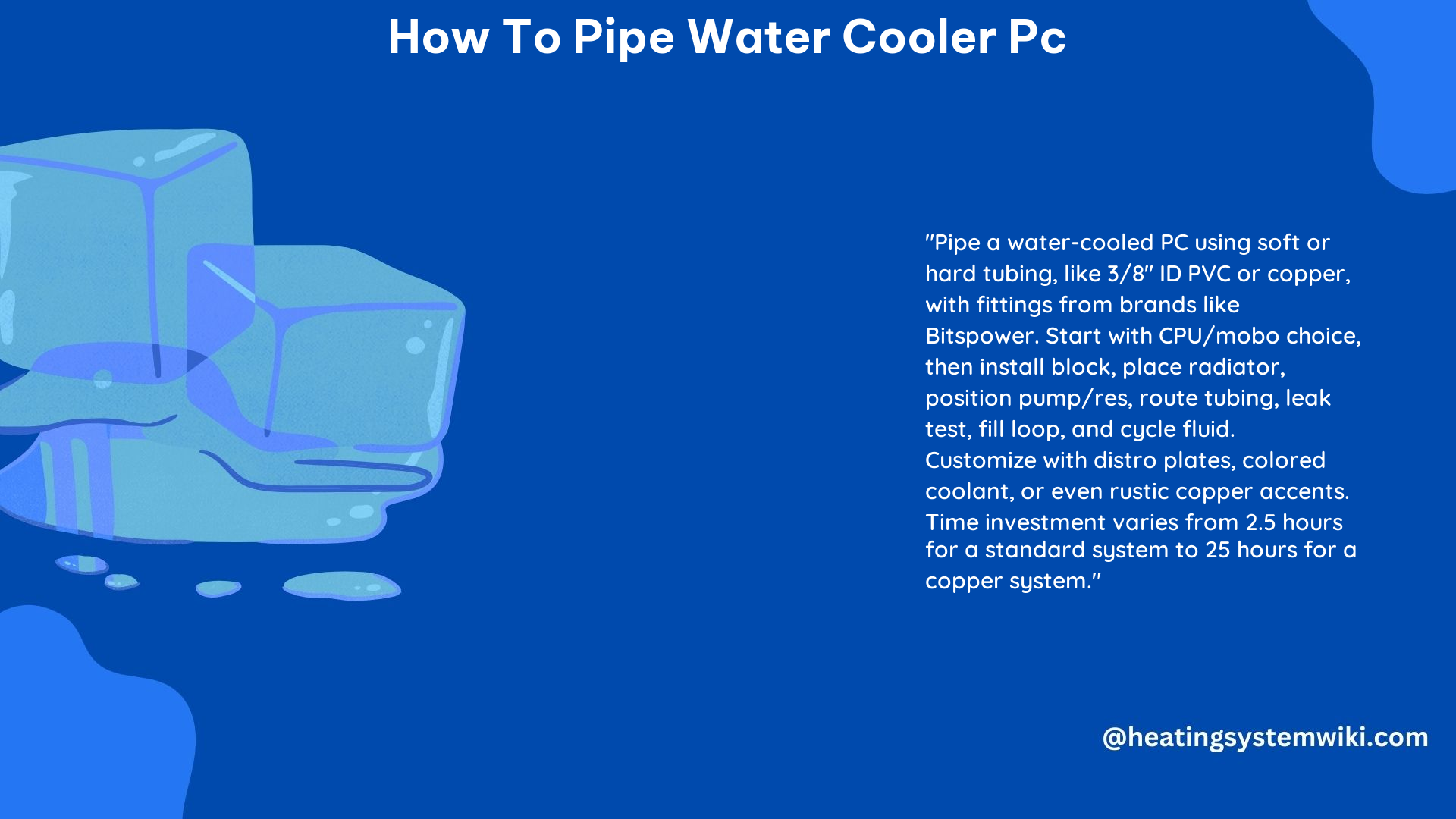Piping a water cooler PC is a complex process that requires careful planning, precise measurements, and attention to detail. This comprehensive guide will walk you through the step-by-step process of piping a water cooler PC, providing you with the technical specifications and requirements for each step.
Choosing the Right Parts
Before you begin the piping process, it’s crucial to select the right components for your water cooler PC. This includes the CPU/motherboard, water block, radiator, pump/reservoir, tubing, and fittings. Ensure that all the parts are compatible with each other and with your PC case. For example, if you’re using 3/8-inch ID (inside diameter) tubing, you should use fittings with the same ID.
When selecting the components, consider the following technical specifications:
- Tubing: The most common tubing sizes for water cooling are 1/2-inch ID and 3/8-inch ID. Choose the size that best fits your components and provides the desired flow rate.
- Fittings: The fittings should match the tubing size. For 3/8-inch ID tubing, you’ll need 3/8-inch OD (outside diameter) fittings.
- Radiator: The radiator size is typically measured in millimeters (mm), with common sizes being 240mm, 360mm, and 480mm. Choose a radiator that can effectively dissipate the heat generated by your components.
- Pump/Reservoir: A popular choice for water cooling is the D5 pump, which provides a high flow rate and is compatible with a variety of reservoir sizes. A 250ml reservoir is a common option.
- Coolant: Distilled water with a biocide additive is a popular choice for water cooling, as it helps prevent algae growth and corrosion.
Installing the Water Block

The first step in piping your water cooler PC is to install the water block on the CPU. Apply a pea-sized amount of high-quality thermal paste between the CPU and the water block to ensure efficient heat transfer. Tighten the screws evenly to avoid damaging the CPU.
Installing the Radiator
The radiator should be installed in a location where it can receive good airflow, such as the front, top, or rear of the PC case. Leave enough space between the radiator and other components to allow for proper airflow. The radiator should be positioned so that it can be easily connected to the pump and the water block.
Installing the Pump/Reservoir
The pump/reservoir should be installed in a location where it can receive good airflow and where it can be easily connected to the radiator and the water block. Follow the manufacturer’s instructions for installing the pump/reservoir, ensuring that it is securely mounted and oriented correctly.
Bending the Tubing
Bending the tubing is a critical step in piping a water cooler PC. Use a tubing bender to carefully shape the tubing to the desired form, ensuring that the bends are smooth and the tubing is the correct length. Measure the distances between the components carefully to ensure a proper fit. After cutting the tubing, use a deburrer tool to remove any burrs or rough edges.
Installing the Fittings
Install the fittings on the tubing before connecting the tubing to the components. Use the correct size fittings for the tubing, and tighten them evenly to prevent leaks.
Leak Testing
Before filling the loop with coolant, perform a leak test to ensure that there are no leaks in the system. You can use compressed air or water to perform the leak test. Tighten all fittings before conducting the test.
Filling the Loop
Once you’ve confirmed that there are no leaks, you can fill the loop with coolant. Follow the manufacturer’s instructions for filling the loop, and be prepared to “burp” the system to remove any air bubbles.
Cycling the Fluid
After filling the loop, run the PC for a few hours to allow the coolant to circulate throughout the system. Monitor the coolant temperature to ensure that the water cooling system is functioning properly.
By following these steps and adhering to the technical specifications, you can successfully pipe a water cooler PC and enjoy the benefits of improved cooling performance and reduced system temperatures.
References:
